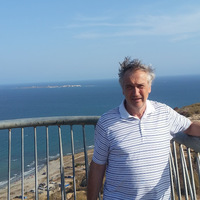During December 12, 1983 through March 1, 1984 of the 14th Winter Olympic Games at Sarajevo, supercooled fog dispersal experiments were carried out at the airport and over the skiing slopes using simple, new ground-based liquid propane... more
During December 12, 1983 through March 1, 1984 of the 14th Winter Olympic Games at Sarajevo, supercooled fog dispersal experiments were carried out at the airport and over the skiing slopes using simple, new ground-based liquid propane seeding devices. After successful preliminary tests in December and the first half of January, a fog dispersal operation was conducted operationaIIy at the Sarajevo airport. A seeding network of a combination of stationary and mobile liquid propane dispensers was used. Eleven seedings were performed, nine of them being successful (visibility above the required minimum) and two partially successful. Especially significant were the seeding operations at the airport on February 6 and 7, 1984 (the day before the opening of the Olympic Games) enabling the landing and taking off of 30 airplanes, permitting the scheduled opening of the games. Following preliminary confirmation of seeding effect on clouds over the skiing slopes on Mr. Bjelasnica, the visibility reducing clouds were effectively cleared during the official downhill competition on February 16, 1984.
Research Interests:
Research Interests:
Research Interests:
Research Interests:
Most regulatory agencies in Canada and the United States currently rely on the Industrial Source Complex Version 3 (ISC3) model as the workhorse for conducting air quality assessments of non-reactive pollutants. Although refined modelling... more
Most regulatory agencies in Canada and the United States currently rely on the Industrial Source Complex Version 3 (ISC3) model as the workhorse for conducting air quality assessments of non-reactive pollutants. Although refined modelling techniques and models have been developed to overcome many of ISC3's limitations, replacements of the ISC3 model has only recently been proposed for regulatory applications in the US. The widespread use of the more advanced models faces a number of practical hurdles. Nevertheless, there are specific situations in which the use of such models is both necessary and advantageous to industry and regulatory agencies. Industry needs to understand when and where to apply these models. Experience, gained by the authors applying the CALPUFF modelling system, is used to illustrate the use of refined air-dispersion models. La plupart des agences de reglementation au Canada et aux Etats-Unis se fient actuellement au modele ISC3 comme modele de travail pour evaluer la qualite de l'air en rapport avec les polluants non reactifs. Bien que des techniques de modelisation et des modeles perfectionnes aient ete elabores afin de surmonter bon nombre des limites de l'ISC3, on n'a que recemment propose de remplacer le modele ISC3 pour les applications reglementaires aux Etats-Unis. L'emploi generalise des modeles les plus perfectionnes fait face a un certain nombre d'obstacles dans la pratique. Neanmoins, il existe des situations particulieres ou l'emploi de ces modeles est a la fois necessaire et avantageux pour l'industrie et les agences de reglementation. L'industrie doit savoir ou et quand appliquer ces modeles. L'experience acquise par les auteurs lors de l'application du systeme de modelisation CALPUFF sert a illustrer l'emploi des modeles perfectionnes de dispersion dans l'atmosphere.
Research Interests:
Research Interests: Physics and Air Quality
Research Interests:
Three uranium hexafluoride-(UFââ specific models--HGSYSTEM/UFâ, Science Application International Corporation, and RTM-96; three dense-gas models--DEGADIS, SLAB, and the Chlorine Institute methodology; and one toxic chemical... more
Three uranium hexafluoride-(UFââ specific models--HGSYSTEM/UFâ, Science Application International Corporation, and RTM-96; three dense-gas models--DEGADIS, SLAB, and the Chlorine Institute methodology; and one toxic chemical model--AFTOX--are evaluated on their capabilities to simulate the chemical reactions, thermodynamics, and atmospheric dispersion of UFâ released from accidents at nuclear fuel-cycle facilities, to support Integrated Safety Analysis, Emergency Response Planning, and Post-Accident Analysis. These models
Research Interests:
... plume, termination of plume rise by accounting for mechanical and convective turbulence in theatmosphere and the ... min and resulted in a release of 45.8 kg of UF 6 . Total uranium concentrations for ... a wind speed of 6.9 m s -1 ,... more
... plume, termination of plume rise by accounting for mechanical and convective turbulence in theatmosphere and the ... min and resulted in a release of 45.8 kg of UF 6 . Total uranium concentrations for ... a wind speed of 6.9 m s -1 , stability class D, 100% relative humidity, a release ...
